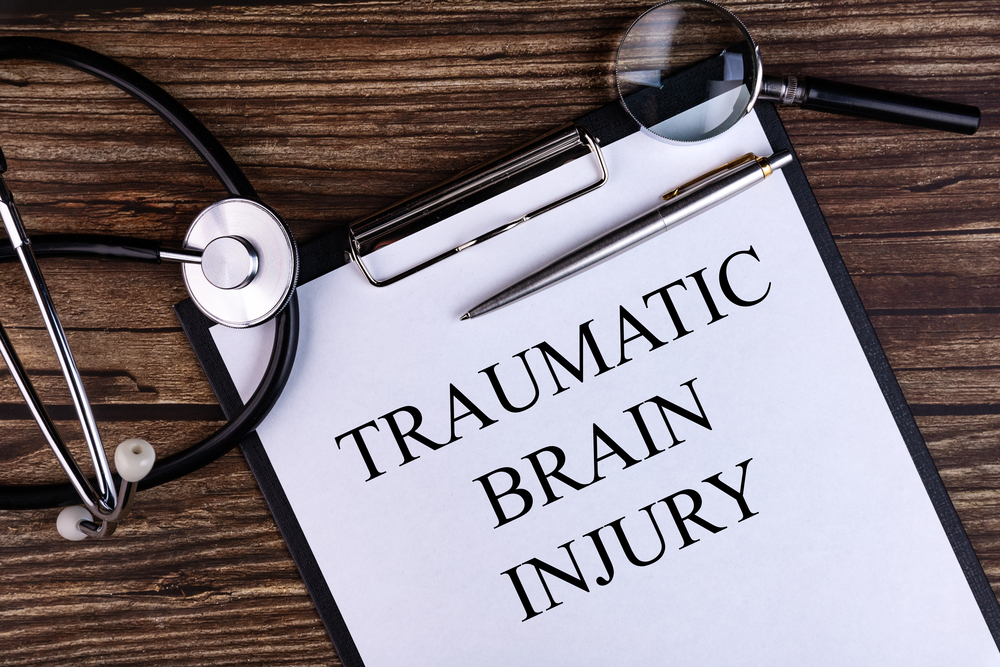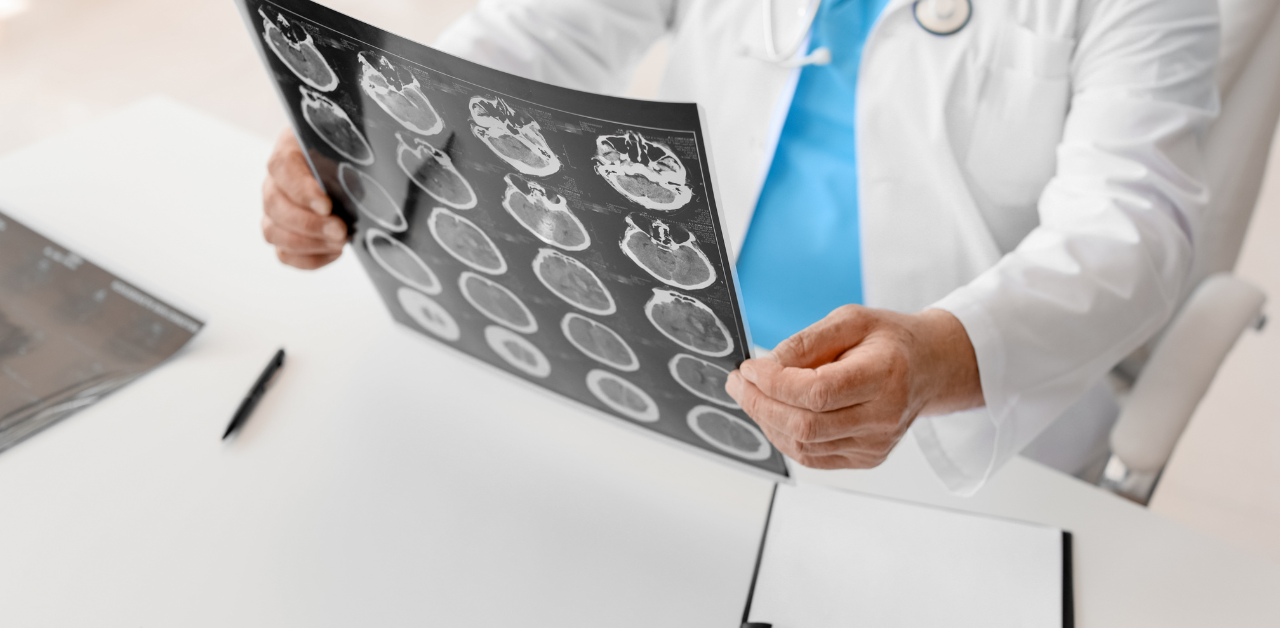
What are the Common Causes of Brain Injuries?
Identifying the common causes of TBIs enables us to take steps to prevent such injuries. The leading causes of brain injuries include the following:
Motor Vehicle Accidents
Motor vehicle accidents are significant contributors to traumatic brain injuries, often resulting from high-impact collisions that cause the brain to move violently within the skull. The sudden and forceful movements during a car crash can lead to bruising and tearing of brain tissue, resulting in severe TBIs. Unrestrained passengers face even higher risks during such accidents.
Research shows that wearing seatbelts can significantly reduce the risk of serious injuries and fatalities in motor vehicle accidents. Avoiding driving under the influence of drugs or alcohol is a must, as impaired driving contributes to a high number of crash fatalities. Following these safety measures can greatly reduce the occurrence of TBIs from car accidents.
Falls
Falls are the leading cause of brain injuries, particularly among seniors and young children. Everyday situations like slipping on stairs or in the bathtub can lead to severe TBIs. Falls account for a high percentage of TBIs, especially in vulnerable populations like older adults and young children.
Preventive measures such as installing handrails, improving lighting, and using non-slip mats can significantly reduce the risk of falls at home. These measures apply to older adults, who are more prone to falls due to age-related physical changes. Making our homes safer protects our loved ones from the devastating effects of falls.
Sports Injuries
Contact sports pose a significant risk of brain injuries, emphasizing the need for protective equipment and proper techniques during play. Sports like football and boxing are particularly associated with TBIs, making helmets and other protective gear essential. Proper training and adherence to safety guidelines can help mitigate the risks of sports-related TBIs.
Education on the importance of wearing protective gear and following safe practices during sports activities can significantly reduce the incidence of TBIs. Promoting a safety culture in sports helps protect athletes from the long-term consequences of brain injuries.
Child-Specific Causes of Brain Injuries
Children are particularly vulnerable to brain injuries due to factors like falls, motor vehicle accidents, and abuse. Understanding child-specific causes of brain injuries is imperative for prevention and protection.
Shaken Baby Syndrome
Shaken Baby Syndrome is a serious brain injury resulting from forcefully shaking an infant. Symptoms may include issues with eating or nursing and inconsolable crying. This syndrome is often a consequence of child abuse and improper handling.
Awareness and prevention strategies are vital to protecting infants from the dangers of Shaken Baby Syndrome Educating caregivers about the risks and symptoms can help prevent this severe brain injury.
Playground Accidents
Playground injuries are a common cause of brain injuries in children, often resulting from falls or collisions. Falls on playground equipment are one of the most common ways children sustain TBIs.
Proper supervision and safety measures, such as soft surfaces under play equipment and adult supervision, can significantly reduce the risk of playground-related brain injuries. Ensuring playground safety protects children from TBIs.

Preventive Measures for Brain Injuries
Educating individuals about brain injury risk factors and causes can significantly reduce their incidence. Awareness and preventive measures are key to protecting ourselves and our communities from TBIs.
Safety Equipment and Practices
Implementing preventive strategies can significantly lower the risk of sustaining brain injuries in various situations. Helmets should be worn during activities like biking, skiing, and contact sports to prevent head injuries. Seatbelts are also essential for minimizing the risk of injuries during car accidents.
Public education campaigns can help dispel common misconceptions about TBIs and promote safer practices. Encouraging the use of protective gear and safe practices can reduce the incidence of TBIs in our communities.
Home Safety Improvements
Installing handrails and improving lighting can help prevent falls in the home, reducing the risk of traumatic brain injuries. Ensuring proper lighting and secure handrails can decrease the likelihood of falls, especially among older adults.
Removing tripping hazards and using non-slip mats in wet areas are effective strategies to enhance home safety.
Awareness and Education
Training programs aimed at caregivers can help them implement effective strategies to protect children from head injuries. Education plays an important role in preventing brain injuries by raising awareness about their causes and consequences. Public awareness campaigns can effectively communicate the risks of brain injuries and promote preventative measures in the community.
Educational initiatives should focus on continuous learning and adapting strategies to minimize brain injury risks. Staying informed and vigilant helps protect ourselves and our loved ones from the devastating effects of TBIs.
Immediate Steps After a Head Injury
Taking immediate action after a head injury avoids serious complications. Knowing the right steps can significantly improve the outcome of a traumatic brain injury (TBI).
1. Seek Medical Attention
Always seek medical help right away, even if the injury seems minor. Symptoms can appear hours or even days later, and untreated head injuries may lead to severe conditions like bleeding or swelling in the brain. Watch for warning signs such as persistent headaches, vomiting, or sudden changes in behavior. Getting a medical evaluation early can prevent further complications and ensure proper care.
2. Monitor Symptoms Closely
After a head injury, symptoms can worsen over time. Common signs to watch include confusion, severe headaches, and unusual behavior. Monitoring the person closely for several days is essential, as delayed symptoms may signal more severe issues that need immediate attention. Staying alert to these changes helps ensure quick medical intervention if necessary.
3. Consult a Traumatic Brain Injury Lawyer
In the aftermath of a head injury, it may be helpful to consult a traumatic brain injury lawyer, mainly if the injury was caused by an accident or negligence. A lawyer can help you understand your rights, guide you through the legal process, and pursue compensation to cover medical expenses, lost wages, and other costs related to the injury.
Long-Term Effects of Brain Injuries

Individuals with moderate or severe TBI often experience significant cognitive and emotional disturbances related to neurological disorders. The symptoms associated with moderate and severe TBIs can evolve and change over time.
Comprehending the long-term effects of brain injuries is key to developing effective treatment and rehabilitation plans.
Cognitive and Physical Impacts
Traumatic brain injuries can cause significant challenges in cognitive functions such as memory, attention, and problem-solving. Injuries to the frontal lobe can affect reasoning, judgment, and impulse control, potentially leading to risky behaviors. Additionally, damage to the brain’s left hemisphere may result in speech difficulties and challenges in understanding language.
Speech therapy addresses communication difficulties and involves techniques for managing swallowing issues after a brain injury.
Emotional and Behavioral Changes
Individuals may experience emotional disturbances like anxiety, depression, and mood swings following a brain injury. Long-term brain injury consequences can also include emotional issues like mood swings and an increased likelihood of depression. Due to the potential for significant emotional changes, psychological support is essential for individuals recovering from brain injuries.
Understanding these emotional and behavioral changes can help caregivers and healthcare providers offer better support. A stable and supportive environment aids in the emotional recovery of TBI patients, helping them regain normalcy.
Rehabilitation and Recovery
Rehabilitation after a traumatic brain injury is essential for addressing both physical and mental challenges that arise post-injury. Effective rehabilitation interventions can improve functional outcomes and quality of life for individuals recovering from TBIs.
Physical Therapy
Physical therapy after a TBI focuses on enhancing mobility, balance, and strength, often incorporating assistive devices. Through targeted exercises and rehabilitative approaches, physical therapy improves the quality of life for individuals recovering from brain injuries.
Restoring mobility and strength is vital for TBI patients and physical therapy offers personalized exercises tailored to their specific needs. This aspect of rehabilitation helps patients regain independence and improve daily functioning.
Occupational Therapy
Occupational therapy emphasizes regaining the skills required for daily living, helping patients adapt to changes in their abilities. This form of therapy focuses on enabling patients to regain skills necessary for daily living and achieve independence.
Occupational therapy focuses on helping patients regain the ability to perform daily activities effectively and independently. By working on sensory skills and other critical areas, occupational therapy plays a significant role in the overall rehabilitation process.
Speech Therapy
Speech therapy is recommended for individuals experiencing communication difficulties. It works on both verbal and nonverbal communication skills. This therapy addresses communication issues, using tailored strategies to enhance verbal skills and overall communication abilities post-injury.
Language therapy, a subset of speech therapy, can help TBI patients manage swallowing issues and enhance their quality of life. By addressing these communication challenges, speech therapy is a vital component of the rehabilitation process for TBI patients.

Jeff Temple
Personal Injury Lawyer
Consult a Traumatic Brain Injury Attorney for Legal Support
Brain injuries have many causes, from car accidents to sports injuries. Traumatic brain injuries (TBI) can be mild, moderate, or severe, with symptoms ranging from headaches to cognitive difficulties.
If left untreated, severe brain injuries can lead to long-term complications like neurological disorders or even permanent disability. Immediate medical attention prevents further injury and supports recovery through physical or occupational therapy.
If you or a loved one is suffering from a brain injury due to the negligence of others, Temple Injury Law is here to help. Schedule a consultation today to explore your legal options and secure the justice you deserve.



